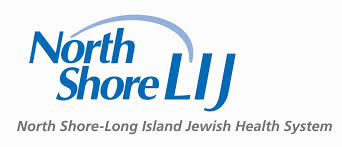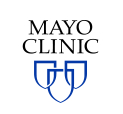Depsipeptide to Treat Patients With Cutaneous T-Cell Lymphoma and Peripheral T-Cell Lymphoma
| Status: | Active, not recruiting |
|---|---|
| Conditions: | Lymphoma |
| Therapuetic Areas: | Oncology |
| Healthy: | No |
| Age Range: | 18 - Any |
| Updated: | 4/21/2016 |
| Start Date: | December 2000 |
| End Date: | December 2016 |
Phase II Trial of Depsipeptide in Patients With Cutaneous T-Cell Lymphoma and Relapsed Peripheral T-Cell Lymphoma
Background:
NSC630176 is a depsipeptide fermentation product from Chromobacterium violaceum with potent
cytotoxic activity against human tumor cell lines and in vivo efficacy against both human
tumor xenografts and murine tumors (1-3).
NSC 630176, herein referred to as depsipeptide, shows a lack of cross resistance with
several commonly used cytotoxic agents such as vincristine, 5-fluorouracil, mitomycin C and
cyclophosphamide (2). However, it has been defined as a P-glycoprotein (Pgp) substrate by
COMPARE analysis of the National Cancer Institute (NCI) drug screen cytotoxicity profile
(4).
Depsipeptide is a member of a novel class of antineoplastic agents, the histone deacetylase
inhibitors.
In the phase I trial conducted at the National Cancer Institute (NCI), responses were
observed at the maximum tolerated dose (MTD) in patients with cutaneous and peripheral
T-cell lymphoma.
Objectives:
In patients with cutaneous T-cell lymphoma, the primary end points to be examined are
overall response rate, complete response rate and duration of response.
In patients with relapsed peripheral T-cell lymphoma, the endpoints to be examined are
overall response rate and complete response rate.
To evaluate the tolerability of depsipeptide with extended cycles of therapy.
Eligibility:
Patients with cutaneous T-cell lymphoma (mycosis fungoides or Sezary syndrome) or other
peripheral T-cell lymphomas are eligible.
Design:
Depsipeptide will be administered at 14 mg/m^2, over 4 hours on days 1, 8 and 15.
This trial will accrue in six cohorts; Arm 1, patients with cutaneous T-cell lymphoma who
have had less than or equal to two prior cytotoxic chemotherapy regimens; Arm 2, patients
with peripheral T-cell lymphoma who have had less than or equal to two prior cytotoxic
chemotherapy regimens; Arm 3, patients with cutaneous and peripheral T-cell lymphoma who
have had more than two prior cytotoxic chemotherapy regimens; Arm 4, patients with other
mature T-cell lymphomas; Arm 5, a replicate arm of arm 1; Arm 6, patients with peripheral
T-cell lymphoma who have had more than two prior cytotoxic chemotherapy regimens; Arm 7,
patients with cutaneous T cell lymphoma who have received vorinostat.
Dose may be adjusted based on toxicities.
NSC630176 is a depsipeptide fermentation product from Chromobacterium violaceum with potent
cytotoxic activity against human tumor cell lines and in vivo efficacy against both human
tumor xenografts and murine tumors (1-3).
NSC 630176, herein referred to as depsipeptide, shows a lack of cross resistance with
several commonly used cytotoxic agents such as vincristine, 5-fluorouracil, mitomycin C and
cyclophosphamide (2). However, it has been defined as a P-glycoprotein (Pgp) substrate by
COMPARE analysis of the National Cancer Institute (NCI) drug screen cytotoxicity profile
(4).
Depsipeptide is a member of a novel class of antineoplastic agents, the histone deacetylase
inhibitors.
In the phase I trial conducted at the National Cancer Institute (NCI), responses were
observed at the maximum tolerated dose (MTD) in patients with cutaneous and peripheral
T-cell lymphoma.
Objectives:
In patients with cutaneous T-cell lymphoma, the primary end points to be examined are
overall response rate, complete response rate and duration of response.
In patients with relapsed peripheral T-cell lymphoma, the endpoints to be examined are
overall response rate and complete response rate.
To evaluate the tolerability of depsipeptide with extended cycles of therapy.
Eligibility:
Patients with cutaneous T-cell lymphoma (mycosis fungoides or Sezary syndrome) or other
peripheral T-cell lymphomas are eligible.
Design:
Depsipeptide will be administered at 14 mg/m^2, over 4 hours on days 1, 8 and 15.
This trial will accrue in six cohorts; Arm 1, patients with cutaneous T-cell lymphoma who
have had less than or equal to two prior cytotoxic chemotherapy regimens; Arm 2, patients
with peripheral T-cell lymphoma who have had less than or equal to two prior cytotoxic
chemotherapy regimens; Arm 3, patients with cutaneous and peripheral T-cell lymphoma who
have had more than two prior cytotoxic chemotherapy regimens; Arm 4, patients with other
mature T-cell lymphomas; Arm 5, a replicate arm of arm 1; Arm 6, patients with peripheral
T-cell lymphoma who have had more than two prior cytotoxic chemotherapy regimens; Arm 7,
patients with cutaneous T cell lymphoma who have received vorinostat.
Dose may be adjusted based on toxicities.
Background:
NSC630176 is a depsipeptide fermentation product from Chromobacterium violaceum with potent
cytotoxic activity against human tumor cell lines and in vivo efficacy against both human
tumor xenografts and murine tumors (1-3).
NSC 630176, herein referred to as depsipeptide, shows a lack of cross resistance with
several commonly used cytotoxic agents such as vincristine, 5-fluorouracil, mitomycin C and
cyclophosphamide (2). However, it has been defined as a P-glycoprotein (Pgp) substrate by
COMPARE analysis of the National Cancer Institute (NCI) drug screen cytotoxicity profile
(4).
Depsipeptide is a member of a novel class of antineoplastic agents, the histone deacetylase
inhibitors.
In the phase I trial conducted at the NCI, responses were observed at the maximum tolerated
dose (MTD) in patients with cutaneous and peripheral T-cell lymphoma.
Objectives:
In patients with cutaneous T-cell lymphoma, the primary end points to be examined are
overall response rate, complete response rate and duration of response.
In patients with relapsed peripheral T-cell lymphoma, the endpoints to be examined are
overall response rate and complete response rate.
To evaluate the tolerability of depsipeptide with extended cycles of therapy.
Eligibility:
Patients with cutaneous T-cell lymphoma (mycosis fungoides or Sezary syndrome) or other
peripheral T-cell lymphomas are eligible.
Design:
Depsipeptide will be administered at 14 mg/m^2, over 4 hours on days 1, 8 and 15.
This trial will accrue in six cohorts; Arm 1, patients with cutaneous T-cell lymphoma who
have had less than or equal to two prior cytotoxic chemotherapy regimens; Arm 2, patients
with peripheral T-cell lymphoma who have had less than or equal to two prior cytotoxic
chemotherapy regimens; Arm 3, patients with cutaneous and peripheral T-cell lymphoma who
have had more than two prior cytotoxic chemotherapy regimens; Arm 4, patients with other
mature T-cell lymphomas; Arm 5, a replicate arm of arm 1; Arm 6, patients with peripheral
T-cell lymphoma who have had more than two prior cytotoxic chemotherapy regimens; Arm 7,
patients with cutaneous T cell lymphoma who have received vorinostat.
Dose may be adjusted based on toxicities.
NSC630176 is a depsipeptide fermentation product from Chromobacterium violaceum with potent
cytotoxic activity against human tumor cell lines and in vivo efficacy against both human
tumor xenografts and murine tumors (1-3).
NSC 630176, herein referred to as depsipeptide, shows a lack of cross resistance with
several commonly used cytotoxic agents such as vincristine, 5-fluorouracil, mitomycin C and
cyclophosphamide (2). However, it has been defined as a P-glycoprotein (Pgp) substrate by
COMPARE analysis of the National Cancer Institute (NCI) drug screen cytotoxicity profile
(4).
Depsipeptide is a member of a novel class of antineoplastic agents, the histone deacetylase
inhibitors.
In the phase I trial conducted at the NCI, responses were observed at the maximum tolerated
dose (MTD) in patients with cutaneous and peripheral T-cell lymphoma.
Objectives:
In patients with cutaneous T-cell lymphoma, the primary end points to be examined are
overall response rate, complete response rate and duration of response.
In patients with relapsed peripheral T-cell lymphoma, the endpoints to be examined are
overall response rate and complete response rate.
To evaluate the tolerability of depsipeptide with extended cycles of therapy.
Eligibility:
Patients with cutaneous T-cell lymphoma (mycosis fungoides or Sezary syndrome) or other
peripheral T-cell lymphomas are eligible.
Design:
Depsipeptide will be administered at 14 mg/m^2, over 4 hours on days 1, 8 and 15.
This trial will accrue in six cohorts; Arm 1, patients with cutaneous T-cell lymphoma who
have had less than or equal to two prior cytotoxic chemotherapy regimens; Arm 2, patients
with peripheral T-cell lymphoma who have had less than or equal to two prior cytotoxic
chemotherapy regimens; Arm 3, patients with cutaneous and peripheral T-cell lymphoma who
have had more than two prior cytotoxic chemotherapy regimens; Arm 4, patients with other
mature T-cell lymphomas; Arm 5, a replicate arm of arm 1; Arm 6, patients with peripheral
T-cell lymphoma who have had more than two prior cytotoxic chemotherapy regimens; Arm 7,
patients with cutaneous T cell lymphoma who have received vorinostat.
Dose may be adjusted based on toxicities.
- INCLUSION CRITERIA:
Based on the Inclusion Criteria outlined below, patients will accrue to one of the cohorts
of the trial.
Cohort- chemotherapy regimens allowed. Cohort Status
Cohort 1
Cutaneous T-cell Lymphoma (mycosis fungoides or Sezary syndrome)-2 or fewer. Closed to
accrual
Cohort 2
Peripheral T-cell Lymphoma, unspecified, or Anaplastic large cell lymphoma (T and null
cell) Primary Cutaneous Type -2 or fewer. Open and accruing
Cohort 3
Cutaneous T-cell Lymphomas or Peripheral T-cell Lymphoma-More than 2. Closed to accrual
Cohort 4
Other Mature T cell Lymphomas-Any number. Open and accruing
Cohort 5
Cutaneous T-cell Lymphoma (mycosis fungoides or Sezary syndrome)-2 or fewer-Cohort 5 is a
replicate cohort, identical to #1
Cohort 6
Peripheral T-cell Lymphoma (PTCL), unspecified, or Anaplastic large cell lymphoma (T and
null cell) Primary Cutaneous Type-More than 2. Patients with PTCL in cohort 3 migrated to
this cohort
Cohort 7
Cutaneous T-cell Lymphoma (mycosis fungoides or Sezary syndrome) Prior vorinostat
required-Any number
Patients with cutaneous T-cell lymphoma [CTCL (mycosis fungoides or Sezary syndrome) stage
IB to IVB are eligible. Patients with stage IB and IIA should be refractory to, intolerant
to, or have reached a six-month or longer response plateau on at least two prior therapies
from the following list: psoralen plus ultraviolet A irradiation (PUVA), ultraviolet B
(UVB), electron beam therapy (EBT), photophoresis, interferon, systemic cytotoxic
chemotherapy, topical nitrogen mustard, or topical carmustine (BCNU). One qualifying prior
treatment must have been topical nitrogen mustard, topical carmustine or a phototherapy
(UVB, PUVA or EBT). Topical steroids, systemic retinoids or biologicals do not qualify.
Patients with stage IB or IIA who are not candidates for topical nitrogen mustard, topical
carmustine or phototherapy (UVB, PUVA or EBT) are eligible for enrollment. Patients may
not have received more than two systemic cytotoxic chemotherapy regimens. Steroids,
retinoids, and biologic agents, will not be considered as systemic cytotoxic chemotherapy.
Radiolabeled monoclonal antibody therapy is considered equivalent to a systemic cytotoxic
chemotherapy regimen and must be counted toward the two prior systemic cytotoxic regimens.
Patients with stage IIB-IVB who have had no more than 2 prior systemic cytotoxic
chemotherapeutic regimens are eligible. There is no restriction regarding number of prior
topical therapies, skin irradiation, or non-cytotoxic systemic therapies (i.e. PUVA,
retinoids or biologic, with the exception of radiolabeled monoclonal antibody therapy) in
this patient group. After 24 patients were enrolled in this arm, the arm was closed, and a
replicate arm constituted of this same patient population was opened (Cohort 5).
Patients with peripheral T-cell lymphoma (PTCL), unspecified, or anaplastic large cell
lymphoma, T and null cell, primary cutaneous type, as defined by the Revised European
American Lymphoma (REAL)/World Health Organization (WHO) classification (16-18), who have
experienced disease progression after receiving prior standard treatment and who have had
no more than 2 prior systemic cytotoxic chemotherapeutic regimens are eligible.
Patients with cutaneous T cell lymphoma (Mycosis fungoides or Sezary Syndrome) or
peripheral T cell lymphoma as defined above who have received more than 2 prior systemic
therapies and who have experienced disease progression will be included in a third and
independent arm. This arm of the protocol was closed to accrual for CTCL with Amendment H.
Patients with mature T cell lymphomas not included above will be enrolled in a fourth arm.
These include but are not exclusively limited to: Enteropathy-type T cell lymphoma;
Hepatosplenic T-cell lymphoma; Subcutaneous panniculitis-like T cell lymphoma;
Angioimmunoblastic T-cell lymphoma; Anaplastic large cell lymphoma. Patients must have
experienced disease progression after receiving prior standard treatment. There will be no
limit on the number of prior regimens. Primitive T cell neoplasms and T cell leukemias
will not be enrolled.
Patients with peripheral T-cell lymphoma, unspecified, or anaplastic large cell lymphoma,
T and null cell, primary cutaneous type, as defined by the REAL/WHO classification
(16-18), who have experienced disease progression after receiving prior standard treatment
and who have had more than 2 prior systemic cytotoxic chemotherapeutic regimens are
eligible for enrollment to a sixth arm of the trial.
Patients with cutaneous T cell lymphoma (Mycosis fungoides or Sezary Syndrome) or
peripheral T cell lymphoma as defined in #1 who have received any number of prior systemic
therapies and who have previously been treated with vorinostat will be included in a third
and independent arm. Patients can be enrolled in this arm if they received prior
vorinostat and experienced disease progression, subsequent relapse, or had to discontinue
to agent due to toxicity.
Disease that is measurable by radiographic imaging, assessing skin lesions, or by
quantitating Sezary cell count.
Patients must:
be age greater than or equal to 18 years
have a performance status of Eastern Cooperative Oncology Group (ECOG) 0-2
have no serious or intercurrent illness and have a life expectancy of greater than 12
weeks
give written informed consent
female patients of childbearing potential must have a negative pregnancy test within 4
weeks and must use effective contraception
sexually active males must use effective contraception
Laboratory values (performed less than or equal to 14 days prior to registration):
absolute neutrophil count greater than or equal to 1000/microliter, platelets greater than
or equal to l00,000/microliter, bilirubin (total and direct) less than or equal to 1.5x
upper limit of normal, and aspartate aminotransferase (AST) less than or equal to 3x upper
limit of normal, unless impairment is due to organ involvement by lymphoma, creatinine
less than or equal to 1.5x upper limit of normal, or documented creatinine clearance of
greater than or equal to 60mL/min
Cardiac studies (performed within 4 weeks of registration):
Ejection fraction of greater than 50% by Echocardiogram or Cardiac magnetic resonance
imaging (MRI), or greater than or equal to 45% by multi-gated acquisition scan (MUGA)
Scan.
A stable dose (greater than 1 month) of corticosteroids administered for symptom
management will not preclude enrollment. Tapering will be initiated following
administration of depsipeptide.
EXCLUSION CRITERIA:
Patients with unconfirmed diagnosis, or with B-cell lymphomas will be excluded.
Prior or concurrent malignancies that have not been curatively treated.
Known central nervous system (CNS) lymphoma.
Chemotherapy within 4 weeks, 6 weeks for nitrosoureas or mitomycin C.
Biologics, Immunotherapy within 2 weeks.
Human Immunodeficiency virus (HIV) seropositivity.
Pregnant or breast-feeding patients.
Major surgery within 21 days.
Uncontrolled infection or uncontrolled medical illness.
Patients having received prior histone deacetylase (HDAC) inhibitor therapy for T cell
lymphoma will be excluded except for patients eligible to enroll in cohort 7.
Patients with the following cardiac risk factors will be excluded from the study:
Patients with known cardiac abnormalities such as:
Congenital long QT syndrome
Corrected QT interval (QTc) interval greater than 480 milliseconds
Patients who have had a myocardial infarction within 12 months of study entry.
Patients who have active coronary artery disease as, e.g. angina as defined by Canadian
Class II-IV
Patients with an electrocardiography (ECG) recorded at screening showing evidence of
cardiac ischemia (ST depression of greater than or equal to 2 mm).
Any patient in whom coronary artery disease is suspected should be referred for a
cardiology consultation and if active myocardial ischemia is demonstrated the patient
should be excluded. If a noninvasive imaging study is equivocal, it may be necessary to
proceed to coronary angiography.
Patients with congestive heart failure that meets New York Heart Association (NYHA) Class
II to IV definitions and/or ejection fraction less than 45% by MUGA scan or less than 50%
by echocardiogram and/or MRI.
Patients with a history of sustained ventricular tachycardia (VT), ventricular
fibrillation (VF), Torsade de Pointes, or cardiac arrest unless currently addressed with
an automatic implantable cardioverter defibrillator (AICD). Patients with a history of
arrhythmia should have Holter monitoring and evaluation by cardiology.
Patients with dilated, hypertrophic, or restrictive cardiomyopathy from prior treatment or
other causes (in doubt, see ejection fraction criteria above). Patients with left
ventricular hypertrophy should be discussed with the Principal Investigator or Study
Chairman.
Patients with uncontrolled hypertension, i.e., systolic blood pressure (SBP) greater than
or equal to 160 mm Hg or diastolic blood pressure (DBP) greater than or equal to 95 mm Hg.
Patients with cardiac arrhythmia requiring anti-arrhythmic medication other than beta
blocker or calcium channel blocker. Patients in whom digitalis cannot be discontinued are
excluded from study.
Patients with Mobitz II second degree heart block who do not have a pacemaker. Patients
with first degree or Mobitz I second degree heart block, bradyarrhythmias or sick sinus
syndrome require Holter monitoring and evaluation by cardiology.
Patients with other cardiac disease may be excluded at the discretion of the principal
investigator (PI) following consultation with cardiology.
We found this trial at
11
sites
North Shore University Hospital North Shore-LIJ Health System includes 16 award-winning hospitals and nearly 400...
Click here to add this to my saved trials
Click here to add this to my saved trials
University of Pittsburgh The University of Pittsburgh is a state-related research university, founded as the...
Click here to add this to my saved trials
9000 Rockville Pike
Bethesda, Maryland 20892
Bethesda, Maryland 20892
Click here to add this to my saved trials
Click here to add this to my saved trials
Click here to add this to my saved trials
West Virginia University West Virginia University, founded in 1867, has a long and rich history...
Click here to add this to my saved trials
Click here to add this to my saved trials
Mayo Clinic Scottsdale Mayo Clinic Arizona was the second Mayo practice to be established outside...
Click here to add this to my saved trials
Georgetown University Georgetown University is one of the world's leading academic and research institutions, offering...
Click here to add this to my saved trials




